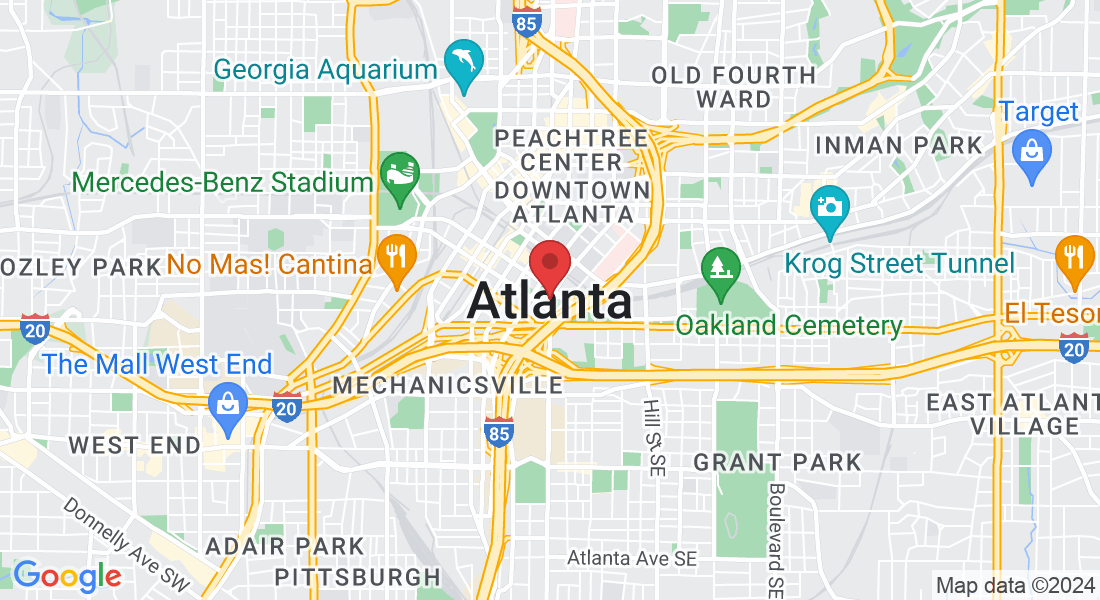Read Our Latest Blogs
Our blog is dedicated to providing Atlanta business owners with valuable insights, expert tips, and the latest updates on tax preparation, planning, and compliance. Whether you're looking to catch up on overdue filings, navigate complex tax laws, or simply stay informed about best practices, you'll find the resources you need right here. Dive into our articles and discover how proactive tax management can benefit your business and help you achieve financial success.
Join Our Email List

Cash Flow vs. Profit: What Business Owners Get Wrong
Introduction: Why Understanding Cash Flow and Profit Matters
Financial terms like "cash flow" and "profit" often get tossed around interchangeably when building a small business. But if you treat them the same, you're setting yourself up for trouble. One of the biggest mistakes entrepreneurs make is confusing profit for available cash. That misunderstanding can quickly lead to missed payments, bounced checks, and bankruptcy.
So, what's the difference between cash flow and profit? Why does it matter so much for your business? And how can you track both effectively? In this guide, we'll dive into:
The difference between cash flow and profit
Why are both essential, but in different ways
Real-world examples of where businesses go wrong
Tools you can use to get clarity (like Float and Pulse)
How to improve both cash flow and profitability
And how to get funding-ready, even if you've made some mistakes
Let's demystify the numbers and help you build a financially resilient business.
Section 1: The Key Difference Between Cash Flow and Profit
Both terms measure financial health at a glance, but they serve very different purposes.
Feature Cash Flow Profit
Definition: Money coming in and out of the business, Revenue minus expenses
Timing Real-time (when cash changes hands) Accounting-based (accrual or cash basis)
What it tells you: Liquidity and payment ability, Business performance over time
Tracked with Cash Flow Statements, Profit & Loss (P&L) Statement
Example:
You make $50,000 in monthly sales but offer net 30 payment terms. Meanwhile, you owe $25,000 in bills this week.
Profit looks good: $50,000 in revenue minus $20,000 in expenses = $30,000 profit
Cash flow is inadequate: $50,000 hasn't come in yet, but you still owe $25,000 this week
Your business is profitable but could run out of cash and default on payments.
Section 2: Why Small Business Owners Confuse the Two
Many new entrepreneurs are excited by their income statements and think, "I'm making money!" But income doesn't mean accessible cash. Here's why confusion happens:
Invoicing gaps: Sales are booked as revenue, but customers haven't paid.
Inventory costs: Goods are bought in bulk and reduce cash, but won't show as losses until sold.
Credit card timing: Expenses are incurred, but money hasn't been withdrawn yet.
Loan repayments: Principal payments reduce cash flow, not profits.
When you're not tracking both cash flow and profit, you're flying blind.

Section 3: Real-World Mistakes That Prove the Point
Mistake #1: Expanding Too Fast
A retail startup increased its product line based on strong sales but didn't account for the upfront inventory investment. While revenue soared, cash flow tanked due to supplier payments.
Lesson: Growth without a cash flow cushion can cripple your operations.
Mistake #2: Ignoring Seasonal Dips
A landscaping company had high summer profits but struggled in winter. They didn't set aside enough reserves and couldn't make payroll in January.
Lesson: Profit doesn't help you if cash isn't managed seasonally.
Mistake #3: Profit-Only Funding Strategy
A marketing agency tried to get funding based on its profit and loss sheet, but it was denied because its cash flow showed it couldn't service debt.
Lesson: Lenders look at cash flow more than profit when approving business loans.
Section 4: How to Track Cash Flow vs. Profit Effectively
A. Track Profit Using:
Profit & Loss (P&L) or Income Statement
Monthly or quarterly view
Shows revenues, cost of goods sold (COGS), and expenses
B. Track Cash Flow Using:
Cash Flow Statement (operating, investing, and financing activities)
Weekly view is ideal for small businesses
Focuses on when cash is received and spent
Tool Tip:
✅ Float – Syncs with QuickBooks/Xero to give real-time cash flow forecasting
✅ Pulse – Ideal for freelancers and service businesses that need to manage income and expenses dynamically
Section 5: How to Improve Your Cash Flow Immediately
Even if your books are a mess, you can take actionable steps:
1. Shorten Payment Terms
Don't give Net 30 if you pay vendors Net 15. Consider requiring deposits or partial upfront payments.
2. Set Up Recurring Invoices
Automate billing cycles for subscription-based or retainer clients.
3. Use Invoice Factoring or Financing
Companies like Fundbox and Bluevine offer funding against outstanding invoices.
4. Delay Non-Essential Expenses
Defer hires, subscriptions, and upgrades if they don't generate immediate ROI.
5. Automate Your Cash Flow Reports
Use Float or Pulse to see precisely when you'll be cash-strapped.
📌 CTA: Book a funding review session to see how to improve your cash flow before applying for capital.
Section 6: Improving Profitability Over Time
While cash flow is about liquidity, profit is about longevity. Here's how to boost it:
1. Raise Prices Strategically
Don't just sell more — increase margins. Offer tiered packages or add-on services.
2. Cut Unproductive Expenses
Audit software subscriptions, unused tools, or low-ROI marketing spend.
3. Increase Customer Lifetime Value
Upsell and cross-sell. A CRM like GoHighLevel or HubSpot helps automate this.
4. Focus on High-Margin Products or Services
Ditch the low-profit offers that drain resources and marketing budget.
Section 7: When You Need Funding — Cash Flow is King
When applying for funding (lines of credit, loans, venture capital), lenders and investors ask:
Can you repay this loan consistently?
Will you be cash-positive next quarter?
Can you handle repayment even with delayed customer payments?
Why You Need a Cash Flow Forecast:
Lenders want to know you won't default. Even with substantial profits, negative cash flow means risk.
✅ Tools like Float show future shortfalls
✅ Pulse helps compare scenarios for expansion or hiring
✅ Nav and Divvy can match you with funding options
📌 Internal Link: Read our Funding Blog
📌 Internal Link: Check out the Credit Repair Guide
Section 8: Why Both Matter for a Sustainable Business
Cash Flow Profit
Pays the bills. Measures growth
Affects lender trust, affects investor interest
Helps manage operations. Helps plan strategy
Crucial in short-term survival, Crucial in long-term scaling
You can't afford to focus on just one. Both need tracking, optimization, and strategy.
Conclusion: Get Smart About Cash and Profit
The bottom line? Profitability without cash is dangerous. And cash without profits won't last.
Take time this month to:
Review your cash flow weekly
Audit your profitability quarterly
Use tools like Float and Pulse
Prepare for funding using real data
And book your free funding strategy session now
📌 CTA: Book your funding review session →

Hear What Our Clients Say
See Our Google Reviews

George Owens

MATS did such a great job on my taxes! This was my first year filing as a real estate agent and they were quick, efficient, personable and worked throughout the weekend to make sure I met the tax deadline. It was an easy process of filing with a simple app and I saved thousands on my tax bil

Max Tanner

I’ve been a happy client of Madison’s Accounting and Tax services for about 3 years now. They have not only done an excellent job of handling my taxes, as I have several businesses, they have increased my tax knowledge as well. I love that as my business continues to grow they are constantly working to keep my finances straight in a creative yet compliant way. I highly recommend.

Kim Wexler

MATS allowed me to make informed decisions and optimize my return, while enlightening me on how I can improve my outcome for the upcoming tax year. I am satisfied and I am excited to continue working with this awesome business.

Billy Jackson

MATS has supported our taxes for a few years and consistently delivers in a timely manner. They take the weight of intricate filing of several forms off your shoulders. We appreciate their timely communication and care for their customers.


© 2025 Madison's Accounting & Tax Services LLC - All Rights Reserved. Terms of Service | Privacy Policy
470-665-5503

